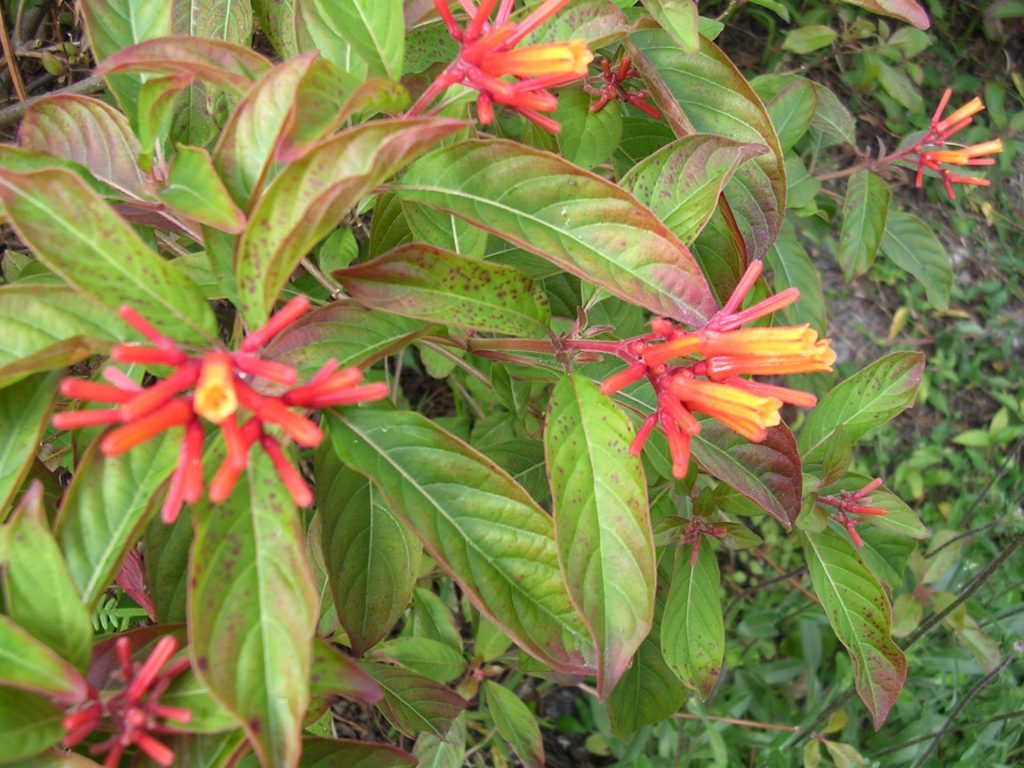
Firebush
Hamelia patens
Firebush is a coffee relative that has red tubular flowers for all but the coldest months and berries that go from yellow, to orange, to red and finally black in late summer and most of the winter.
Firebush is naturally found in coastal and inland hammocks through South and Central Florida and prefers rich soils with organic matter and low levels of wind. Hummingbirds and butterflies visit the flowers and many birds including the cedar waxwings and catbirds eat the fruit.
The berries are edible yet not very tasty and the nectar is sweet when sucked from the flower; kids love this. To maintain at a low height, simply cut back to between ground level and two feet once a year. If not trimmed, it becomes a 15 foot shrub which can be limbed up to produce thick vertical branches to allow easy passage underneath. Place a birdbath and feeder nearby; six feet of clear trunk will prevent cats from surprising your birds.
The non native Hamelia patens variety glabra, sold as “compacta,” “African” or “Dwarf Firebush” from Central America is now what you will find sold as the native Firebush in most garden centers. The leaves lack the slight hairiness of the native and feel like rubber. If the leaves grow off the stem in groups of three or four, it is native and if there are four or five in a whorl, it is the non native. Frustratingly, these characteristics often overlap.
The non native Firebush has a more yellow flower, grows into an ugly 20 foot tall mess with fewer flowers than the native and less wildlife attracted to it. It also hybridizes with the native so that seed spread by birds is often not the true native. It may seem silly to worry about this but we could lose our native plant to the rapidly escaping hybrids.
I like to use several masses of Firebush in a landscape to give the hummingbirds a feeding route to follow. There used to be bumblebees found on Firebush, but they have disappeared in South Florida recently. When planting a butterfly and hummingbird garden, use Firebush as a backdrop and to shield people from thorny larval hosts like Hercules Club, Wild Lime, Catclaw and Blackbead.
Full sun is best and stay away from soil toxin producing trees like Black Olive. Add Pavonia, Red Salvia, Necklacepod, Goldenrod, Verbena, Bluecurls and other wildflowers for nectar. Plant Chapman’s Cassia, Redbay, Hercules Club, Corky Passionvine, Milkweed and native grasses for larval foods.